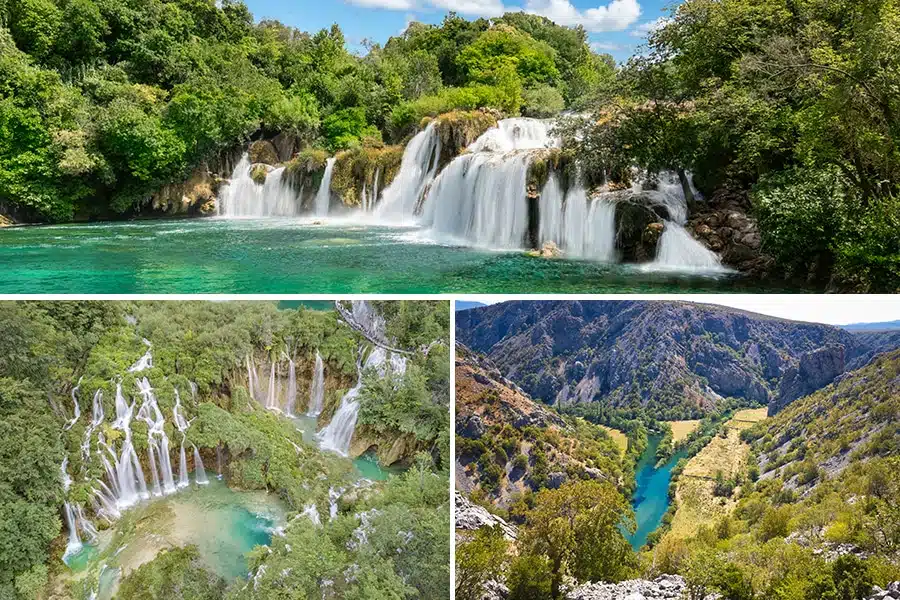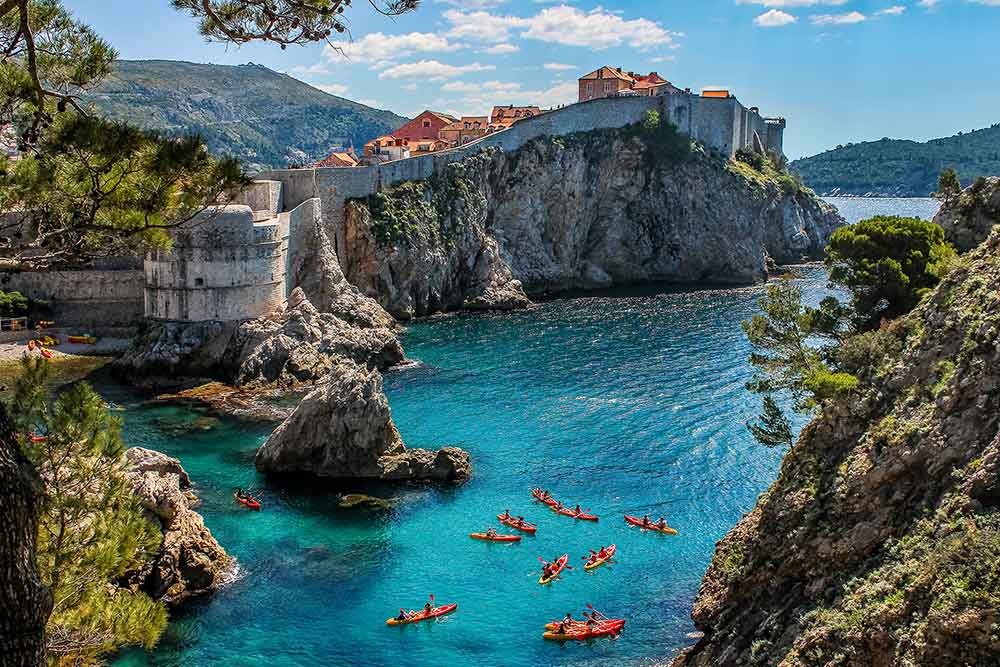The wonders of a small country far from the crowds of tourists
With seven UNESCO World Heritage Sites and more than a thousand islands, Croatia combines gorgeous natural coastlines with towns and villages featuring extraordinary heritage. And its inland region is also charming, brimming with vineyards and olive groves. Escape your daily routine by travelling off the beaten track.
Croatia: a land of art and history
An open-air museum
Bridging East and West, Croatia features a patchwork of different influences. From the Greeks, Venetians and Ottomans to the Austro-Hungarian Empire: its history has been shaped by many kingdoms, empires and republics. Its magnificent cities, villages and countless monuments are testament to this rich past and make Croatia a veritable open-air museum.Dubrovnik is the most flamboyant example of this. A listed UNESCO World Heritage Site, this famous town, nicknamed “the Pearl of the Adriatic”, dazzles millions of visitors each year.
Croatia’s unmissable ancient sites include three UNESCO World Heritage sites: the historic city of Trogir, the Palace of Diocletian in Split (built between the late 3rd and the early 4th centuries), and the Euphrasian Basilica of Poreč. Renaissance gems also abound in Croatia, such as the Franciscan Monastery of Hvar, facing the sea on the tip of the Sridnji peninsula, and the Cathedral of St James in Šibenik (a UNESCO World Heritage Site). They reflect the artistic exchanges that occurred between Northern Italy, Tuscany and Dalmatia during the 15th and 16th centuries. Ruled by the Venetians in the 15th century, the charming port cities of Korcula, on the island of the same name, and Rovinj, in Istria, immerse visitors in the sweet life of a bygone era.
This cultural voyage wouldn’t be complete without a visit to the Bay of Kotor, in neighbouring Montenegro, to explore the Baroque palaces and churches of Perast. The best way to enjoy this spectacular site is by kayak.

Inland getaways: little-known heritage
Croatia’s coastline is the stuff dreams are made of, but the inland regions also have plenty of surprises in store. In Istria, set off to explore the medieval city of Motovun. Located in the peninsula’s high hills, surrounded by dense forest and vineyards, Motovun is one of the best-preserved fortress towns in the country. Its churches are home to impressive Christian artworks, including Renaissance statues. Near the Slovenian border to the north of Zagreb, Varazdin is a long way off the tourist trail. Nicknamed “Croatia’s little Vienna”, its typical late 18th century architecture showcases another facet of the country, one that is just as charming.
Some 20 km from Zagreb and just 5 km from the Slovenian border, the pretty village of Samobor is also well worth a visit. Not least for its delicious cream cake: kremśnita! But this rich speciality that makes foodies go weak at the knees isn’t its only attraction. Samobor feels like it could be in Central Europe and has several interesting monuments, such as the Franciscan monastery and the church of Saint Anastasia. The ruins of a 13th-century castle, surrounded by forests and hills, are a dream destination for visitors on the hunt for mysterious and romantic scenery.

Croatia: a land of water
A fairyland of rivers and waterfalls
Croatia’s natural heritageis just as remarkable, with a series of magnificent, diverse, and unspoilt rivers and lakes. Waterfalls flow into many of them, especially in the karst area.
With its turquoise lakes and stunning waterfalls, the Plitvice Lakes National Park was granted UNESCO World Heritage status in 1979. At 33,000 hectares, 800 of which are lakes, it is admired by more than a million visitors each year. The fabulous karst landscape of Plitvice is dotted with 20 interconnecting lakes, more than 90 waterfalls and a dense beech forest.
Another impressive site is the Krka river, which has given its name to a national park. This biodiversity hotspot is home to over 850 types of plants which flourish in this humid wilderness. Skradinski Buk is the longest and best-known waterfall on the river and flows into a magnificent pool.
The lesser-known Centina Canyon, near Omis in Dalmatia, is surrounded by incredible rock formations: it is the ideal destination for canyoning and rafting fans. The Krupa Canyon, in the Dalmatian hinterland, is also a wonderful place for walking and hiking.

An island odyssey
From the party island of Pag, Croatia’s answer to Ibiza, to Hvar, rated one of the most beautiful islands in the world, via Brac with its Golden Horn beach, Croatian islands have no shortage of charming attractions. By getting off the beaten track, you will discover a myriad of little known, unspoilt slices of paradise where you can savour the joy of taking your time in hidden coves, deserted bays and pine forests.
These less well-known islands include Saplun, Lastovo,Stiniva, Vinogradisce and Vis. The farthest island off the mainland, Vis is a fascinating stop during an Adriatic cruise due to its many sea caves, enchanting beaches and archaeological sites that are just waiting for you to explore them. The peak of Mount Hum offers an outstanding panoramic view of the bay of Komiža.
The small, sparsely inhabited island of Lopud, one of the Elafiti Islands, is perfect for nature lovers: it is car-free, and the incredible coves in the bay of Sunjare easily accessible by bike.
Hailed as one of Croatia’s best-kept secrets, the sleepy fishing island of Dugi Otok features just a dozen small villages, all of which are equally charming. On the north shore of the island, Sakarun Beach enjoys crystal-clear waters.
The stuff of legend, Mljet is an idyllic island in the South Dalmatian Archipelago, covered with dense forest and home to two saltwater lakes. Set off to discover its national park; alongside Plitvice and Krka, it is considered one of the most beautiful in Croatia. Legend has it that Odysseus Cave, on the west coast, is where Odysseus became captivated by the nymph Calypso during his Odyssey. Don’t resist the siren song. Be charmed during your trip to the heart of this archipelago, with a boat trip to try and spot the dolphins of the Adriatic Sea.

Gastronomic discoveries in Istria
Istria, a small peninsula in north Croatia, is a foodies’ paradise. Its smorgasbord of specialities include scampi, smoked ham, and the famous cherries and chestnuts of Lovran, which ripen in September and October. And, of course, depending on the season, black or white truffles, one of the region’s culinary delights. Istria also has several famous wines, including Teran (red) and Malvazija (white), to be discovered during a wine tasting excursion.

PONANT takes you there



